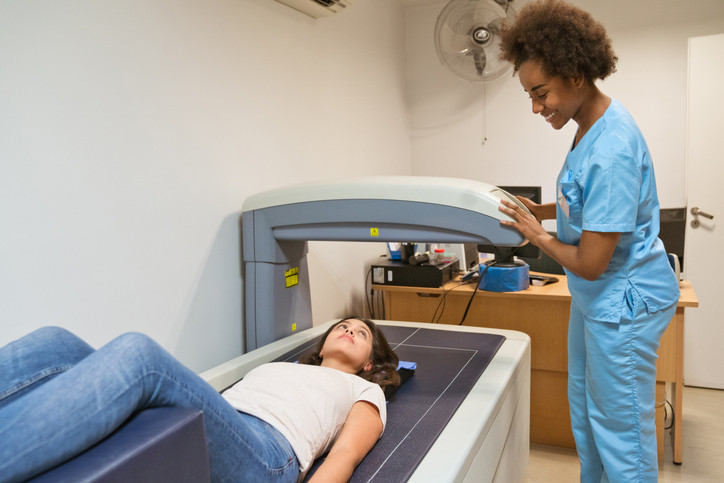What's your t-score? Bone density scans for osteoporosis

While we tend to associate broken bones with younger children roughhousing on the playground, as we age, our bones can become more brittle. Gradual bone loss with aging may also lead to osteoporosis, a disease that thins and weakens the bones. This can lead to broken hips, arms, and various other weakened bone symptoms. Discovering that you may have osteoporosis has become much easier to diagnose with new technologies.
Several technologies can assess bone density. The most common is known as dual energy x-ray absorptiometry (DEXA). For this procedure, a machine sends x-rays through bones in order to calculate bone density. The process is quick, taking only five minutes. And it's simple: you lie on a table while a scanner passes over your body.
While this technology can measure bone density at any spot in the body, it is usually used to measure bone density at the lumbar spine (in the lower back), hip (a specific site in the hip near the hip joint), and femoral neck (the top of the thighbone, or femur). DEXA accomplishes this with only one-tenth of the radiation exposure of a standard chest x-ray.
The procedure is considered the gold standard for osteoporosis screening—though ultrasound, which uses sound waves to measure bone mineral density at the heel, shin, or finger, is also used at health fairs and in some medical offices.
The DEXA scan or ultrasound will give you a number called a T-score, which represents how close you are to average peak bone density. The World Health Organization has established the following classification system for bone density:
• If your T-score is –1 or greater: your bone density is considered normal.
• If your T-score is between –1 and –2.5: you have low bone density, known as osteopenia, but not osteoporosis.
• If your T-score is –2.5 or less: you have osteoporosis, even if you haven't yet broken a bone.
To learn more, buy the Harvard Special Health Report Osteoporosis: A guide to prevention and treatment .
Image: izusek/Getty Images
Disclaimer:
As a service to our readers, Harvard Health Publishing provides access to our library of archived content. Please note the date of last review or update on all articles.
No content on this site, regardless of date, should ever be used as a substitute for direct medical advice from your doctor or other qualified clinician.















